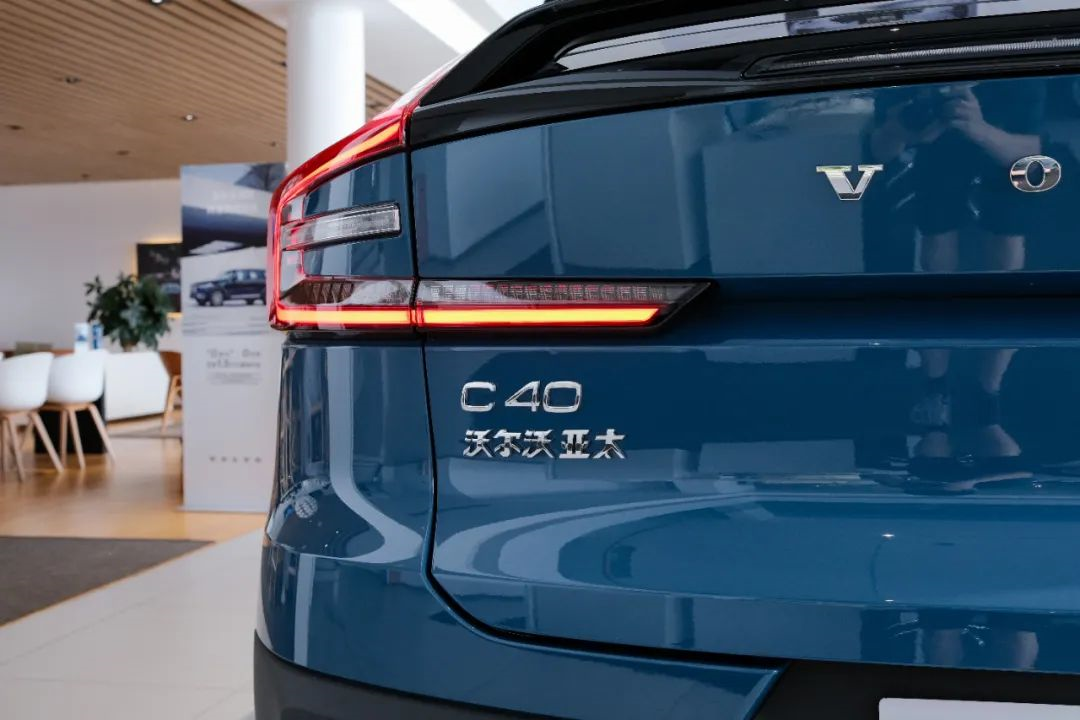The XC40’s Close Brother – Volvo C40
Written by Jingtao Wu
When it comes to Volvo, people would immediately think of the S series sedans represented by S60 and S90, and the XC series SUVs represented by XC60 and XC90. Those who are familiar with the Volvo brand might also think of the V series wagons. However, when it comes to the C series, most people may not be familiar with it.
In fact, over a decade ago, Volvo imported and sold two coupe models, namely, the C30 and C70, in China. The letter “C” in the Volvo system stands for coupe. These two C-series coupe models are considered as representative works with distinctive personalities of the Volvo brand. However, with the discontinuation of these two models in 2013, the C-series gradually faded out of people’s sight.
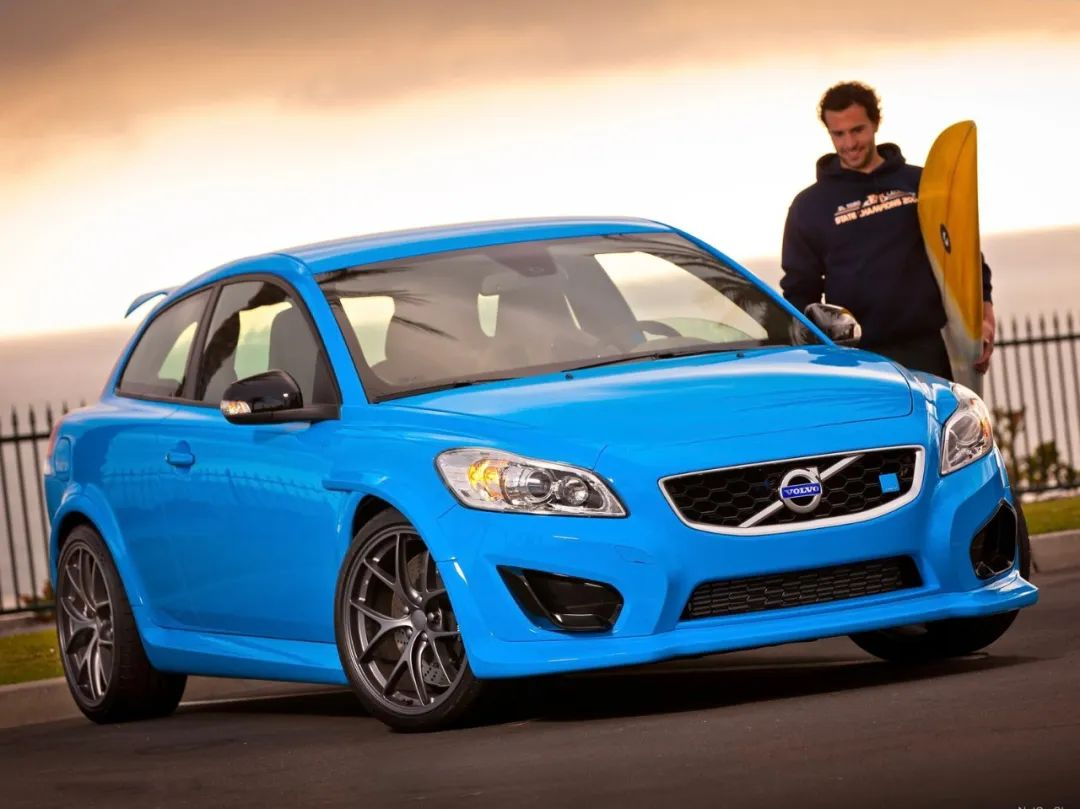
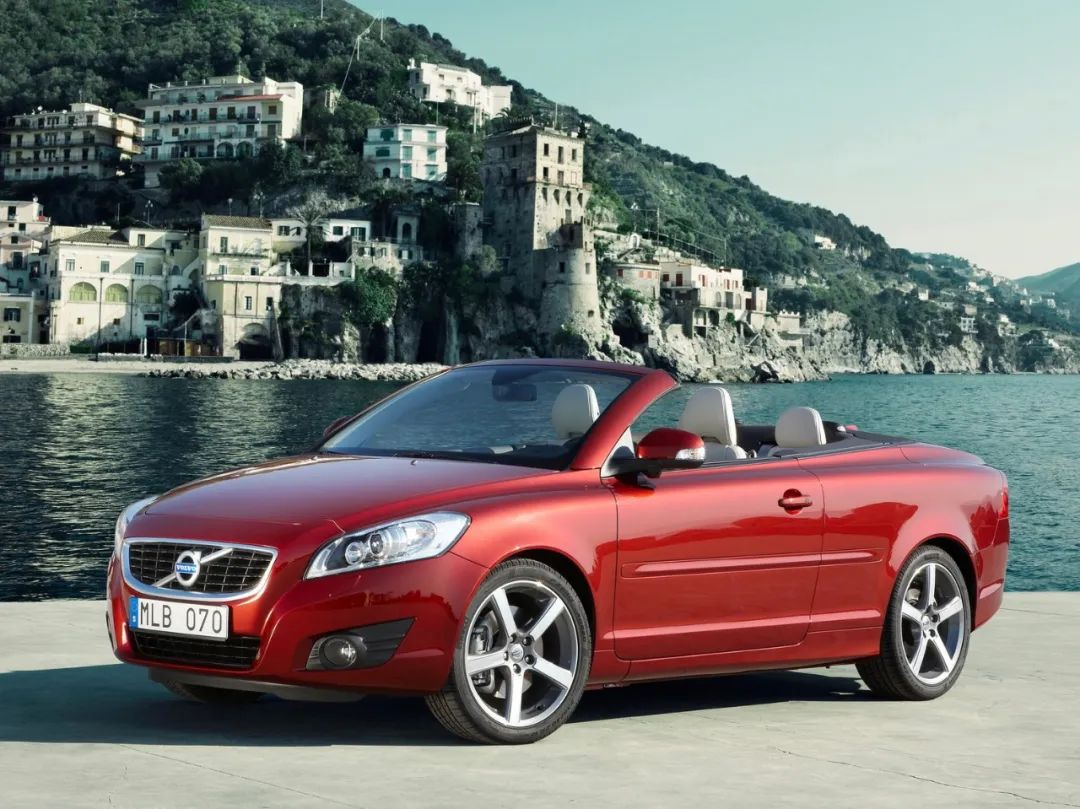
It was not until last year’s Guangzhou Auto Show, eight years later, that the C-series returned, but this time Volvo brought a pure electric SUV coupe- the C40. The new car is based on the CMA platform and positioned as a compact SUV with a similar size to the XC40. At the Guangdong, Hong Kong, and Macau Greater Bay Area Auto Show held last month, Volvo brought the domestic version of the C40. When we learned that this new car had already arrived at the dealership, we went to see it for the first time, to find out how this new work of the Volvo C series would perform.
Environmental Factors
Before introducing the car itself, let’s briefly expand on the changes of Volvo in the new energy direction. Those who care about the deployment of new energy products of the Volvo Group should have noticed that the layout of Volvo for new energy models was quite clear before.
Overall, Volvo is responsible for plug-in hybrid models, while Polestar is responsible for pure electric models (similar to the previous layout of Lynk&Co and Polestar). However, recently, Volvo has continuously launched pure electric versions of XC40 and C40, breaking the previous layout of new energy models. It is believed that one of the reasons for this may be the gradual tightening of automobile environmental protection regulations by the European Union.
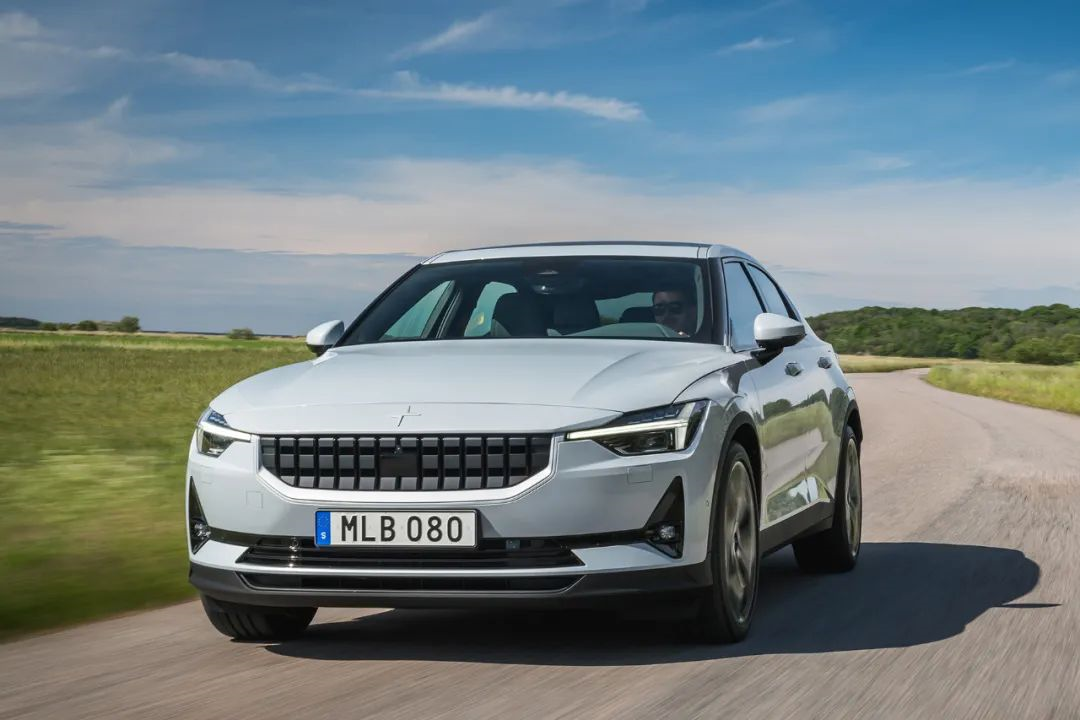 This hypothesis has been partly supported by recent news. According to media reports, on June 8th local time, the European Parliament held a meeting and voted to pass a proposal from the European Commission to stop selling new combustion engine cars, including hybrid vehicles, within the EU from 2035. The proposal was passed by a vote of 339 in favour, 249 against and 24 abstentions.
This hypothesis has been partly supported by recent news. According to media reports, on June 8th local time, the European Parliament held a meeting and voted to pass a proposal from the European Commission to stop selling new combustion engine cars, including hybrid vehicles, within the EU from 2035. The proposal was passed by a vote of 339 in favour, 249 against and 24 abstentions.

Earlier, Jim Rowan, the CEO of Volvo, announced that Volvo Cars will become a pure electric luxury car maker by 2030 and will no longer sell combustion engine cars in Europe by 2035. As a traditional European car manufacturer, such policies and regulations will have a significant impact and influence.
Design: “Same Roots”
As soon as I entered the store, I noticed something interesting. Whether it was by coincidence or intentional, the C40 was placed in front of the XC40, two models that are highly related, and the front and back arrangement created a clever feeling.
Due to its high degree of association with the pure electric version of the XC40, the two cars are very similar in the front design. They both feature a common enclosed grille design for pure electric vehicles, with only slight differences in the design of the plastic decorations and fog light areas under the bumper.
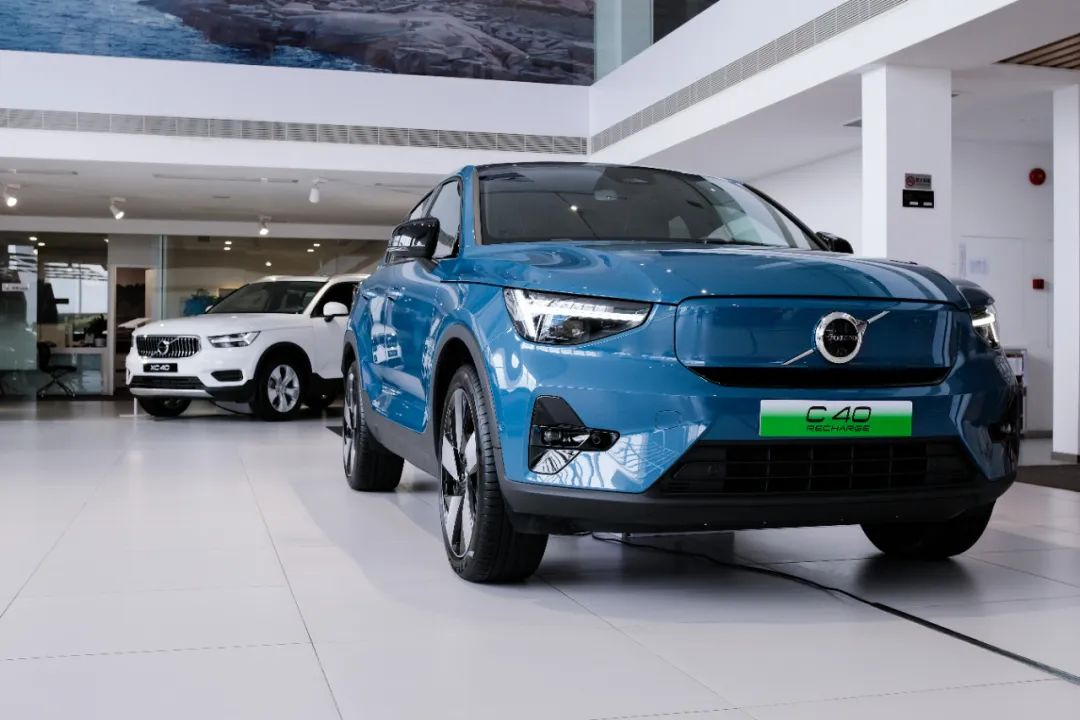
As a newer model, the C40 is equipped with Volvo’s new intelligent pixel headlight technology that includes the newly designed “Thor’s Hammer” headlights.
Each headlight has 84 adaptive LEDs, totaling 168, which can automatically adjust the high and low beam, direction and height, and can identify up to 5 intersecting vehicles. It also offers 10 lighting modes, including 3 high beams and 7 low beams.
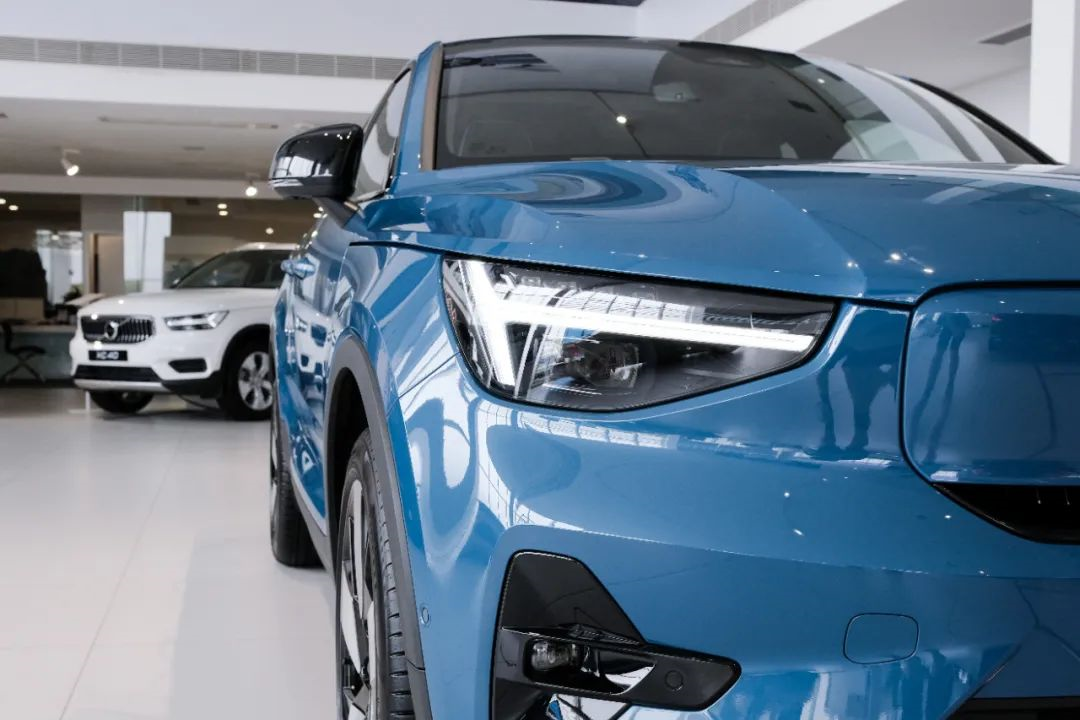
On the side of the car, the C40 features a coupe-like design with sharp body contours, while the XC40 has a more traditional design style that is more in line with the aesthetic of traditional SUV consumers.
Overall, the C40’s design gives a more dynamic and multi-dimensional look, highlighting its sporty and sharp features.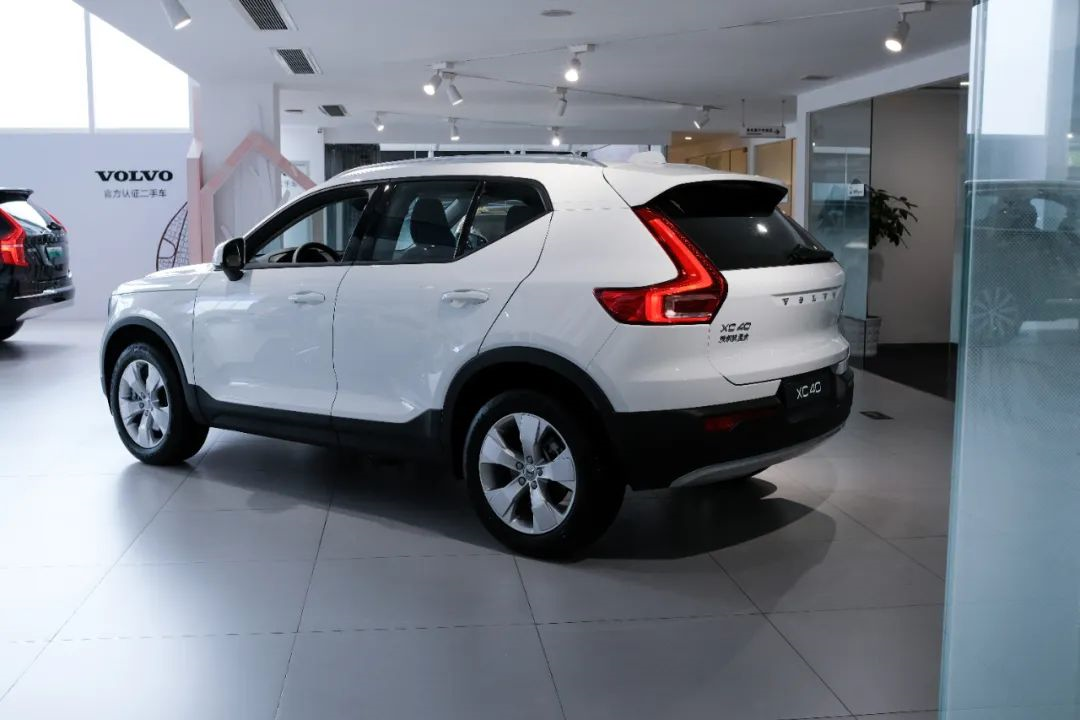
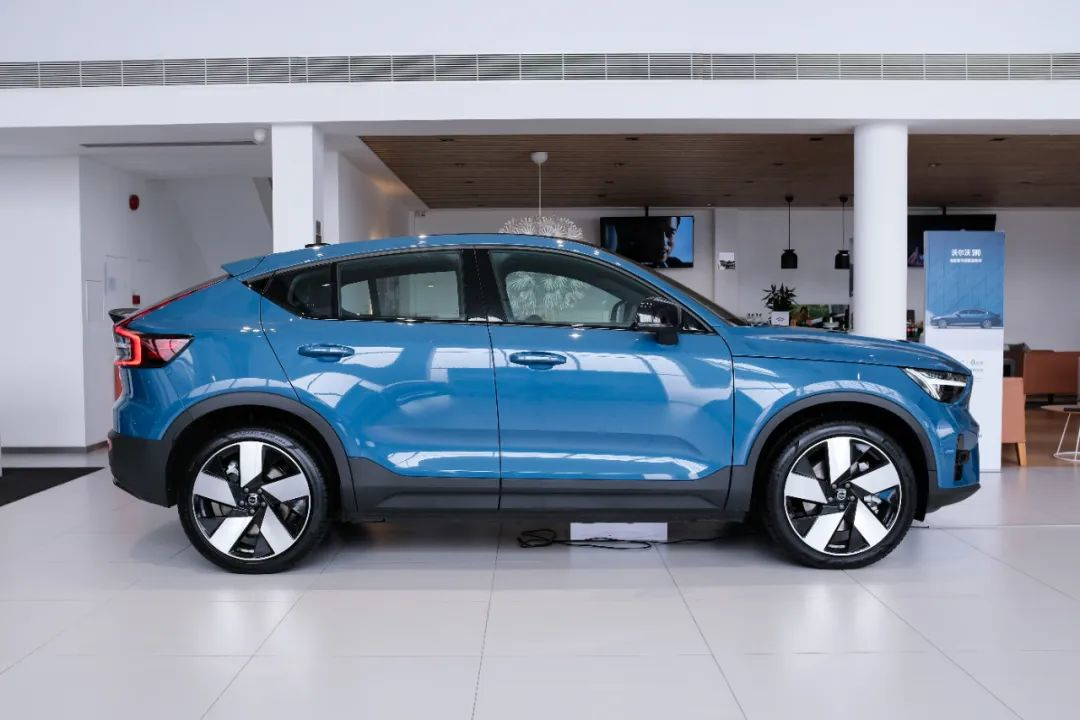
The C40 comes standard with 19-inch windmill-style wheels (20-inch wheels are available throughout the range), paired with 235 front and 255 rear-width Pirelli P ZERO tires, which are believed to have good grip.
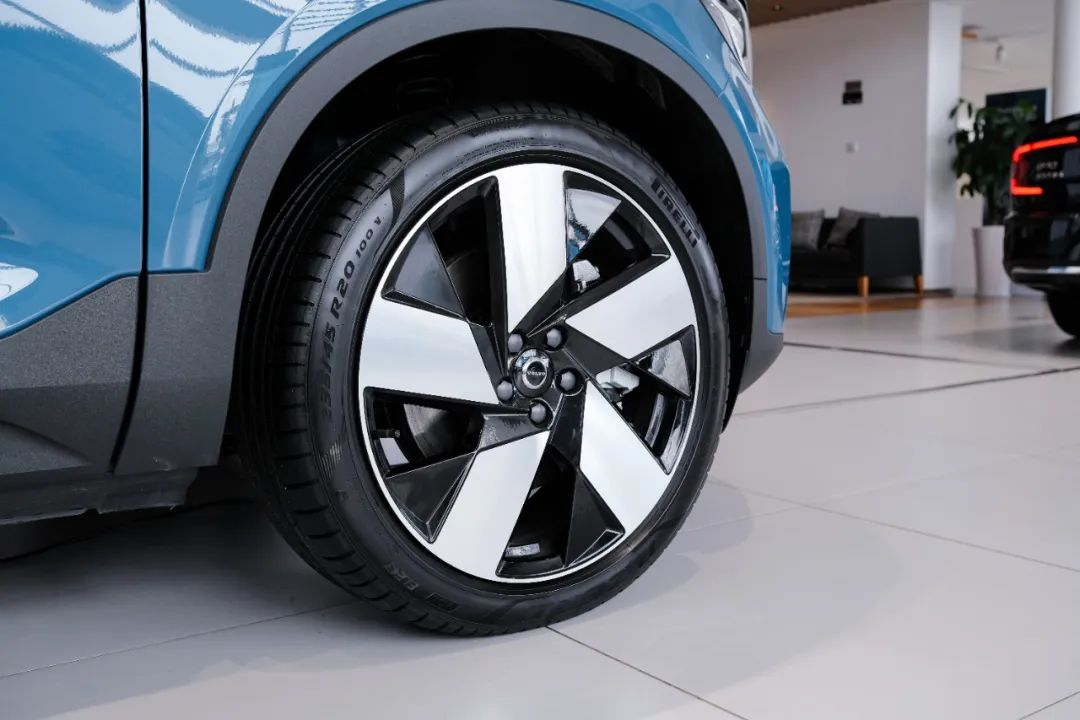
Due to its sleek design, the entire rear end of the car is completely derived from the XC40, with two raised flow-disrupting devices designed above the rear of the vehicle. There is also a small spoiler that matches the design of these devices above the trunk, and the overall rear end of the vehicle creates a sense of battle. The taillights have also been redesigned, with the family-style Viking ax taillights cleverly integrated into the rear of the vehicle’s sleek lines, creating a stunning visual effect.
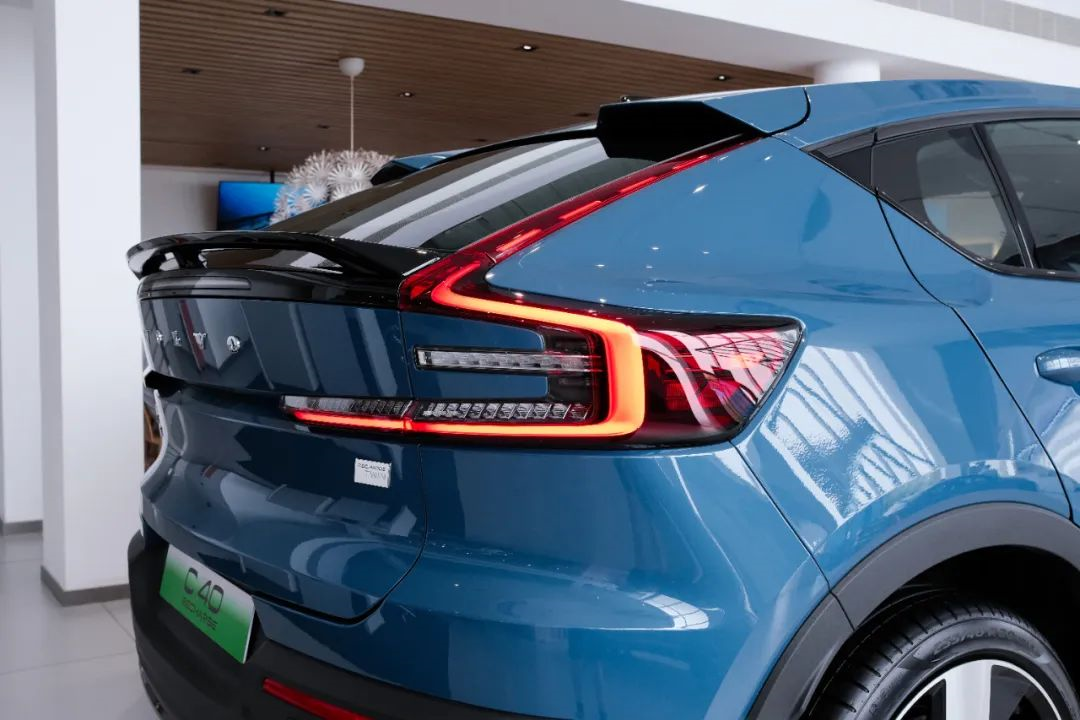
Compared to the exterior, the changes in the interior are somewhat smaller. The C40 continues Volvo’s family’s Nordic minimalist design style, with a similar layout and styling to the XC40. The layout of the center console is the same as the XC40 EV, and the interior will only differ in the materials and color combinations.
The C40’s interior is built with Volvo’s latest 100% Leather-Free concept, making it the first vegan interior model from Volvo, with all interior materials made of environmentally friendly non-animal-based leather substitutes. Thanks to the use of eco-friendly materials, there is no new car odor in this brand new display car.
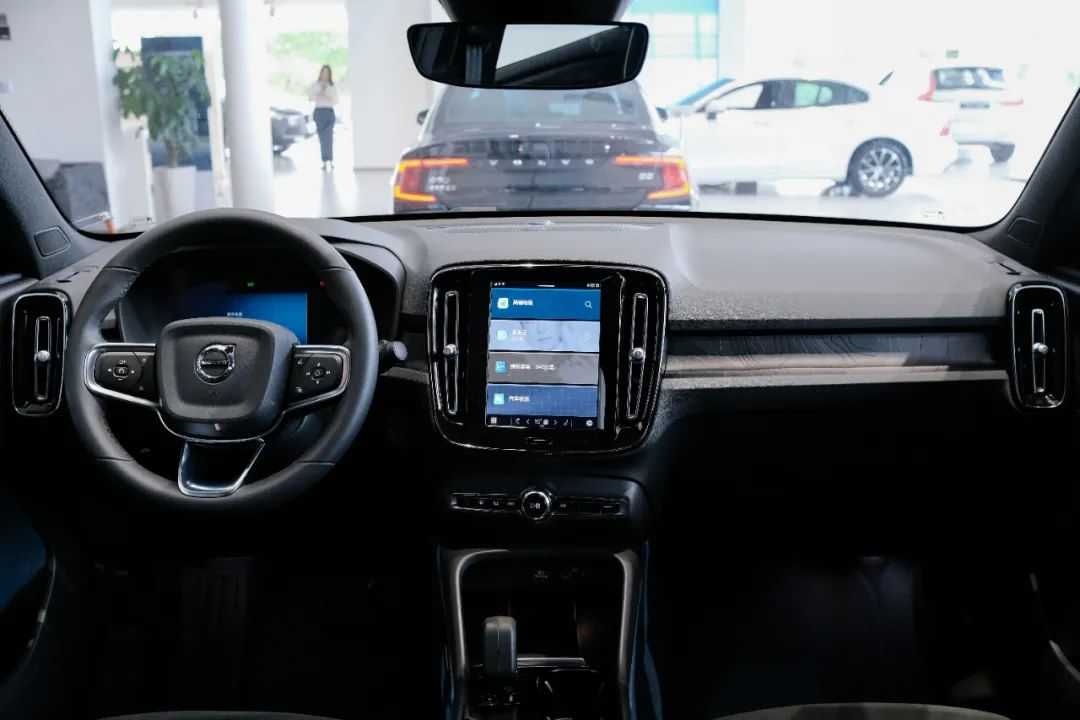
Different from the interior color scheme of the XC40, the C40’s interior is overall black with blue accents. The blue inspiration comes from the deep bay of the Scandinavian West Coast. The blue accents bring a sense of tranquility to the interior and improve the overall visual texture, while also conveying Volvo’s brand concept of environmental protection.
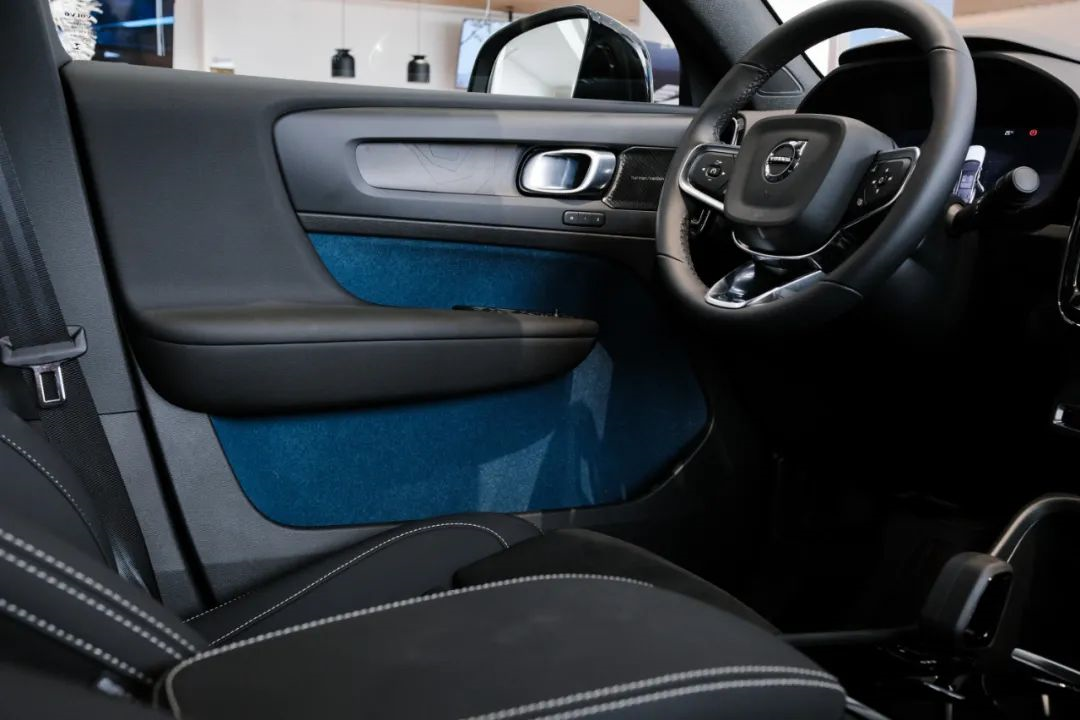 The seats are another highlight. The seats of the C40 are made of a composite material called Bubuck textile and sustainable Microtech Vinyl, which are woven together with 3D stereoscopic cutting. The material has good texture, wear resistance, stain resistance, flame resistance, and other advantages according to the official announcement.
The seats are another highlight. The seats of the C40 are made of a composite material called Bubuck textile and sustainable Microtech Vinyl, which are woven together with 3D stereoscopic cutting. The material has good texture, wear resistance, stain resistance, flame resistance, and other advantages according to the official announcement.
The human engineering of the front seats is excellent, which finds a good balance between comfort and support, and the back support is also well placed for lumbar support. The front seat experience is exemplary in this level of SUV.
Although the rear seats have air conditioning vents, due to the limitations of the body size and the streamlined design, the legroom and headroom are not spacious, and there is still a raised bump in the center of the rear floor compared to a mobile phone, which has a certain impact on the rear seating space.
Moreover, the rear seat cushion of the C40 is short, the backrest angle is straight and cannot be adjusted, leading to a significant difference in the riding experience between the front and rear seats.
Configuration “Homogeneous”
In terms of power configuration, if the appearance and interior of the C40 are roughly the same as the XC40 pure electric version, then the power part is completely the same.
C40 uses the same powertrain as the XC40 pure electric version, offering three models with two powertrain options for consumers to choose from. The long-range version adopts a front single-motor design, with a maximum power of 170 kW and 231 Ps, and a maximum torque of 330 N・m. The acceleration time from 0 to 100 km/h is 7.2 seconds, with a battery capacity of 69 kWh and a range of 550 km (CLTC cycle).
The performance version adopts a front and rear dual-motor design, with a maximum power of up to 300 kW and 408 Ps, and a maximum torque of 660 N・m. The acceleration time from 0 to 100 km/h is only 4.7 seconds. Equipped with a battery pack of 78 kWh, the range is 530 km (CLTC cycle).The chassis adopts a combination of front MacPherson/rear multi-link suspension, equipped with variable damping shock absorber (FSD) that can automatically adjust the internal damping changes according to different road conditions. At the same time, due to the layout of the battery pack of the pure electric model, the C40 can achieve a front-to-rear weight distribution of 50:50 and a lower vehicle center of gravity, which is positively helpful for handling. However, due to this being a static photoshoot, the driving experience in dynamic aspects can only be shared with everyone in the future.
In terms of recharging, the C40 supports up to 100kW DC fast charging, which can replenish 10-80% of the battery level in 40 minutes. It takes 8 hours to fully charge the battery using an 11kW household AC charging station.

Additionally, the C40 is also equipped with a heat pump system that can collect heat from the environment, motor, and battery and distribute it to the interior and battery for heating on demand, controlled by the heat management system. When the battery temperature drops below minus twenty degrees, the vehicle can be automatically awakened for heating to ensure the vehicle’s endurance level in winter.
Final Words
Currently, Volvo C40 has started pre-sales. The pre-sale prices for three configurations are CNY 267,000, CNY 286,000, and CNY 328,000.
Looking at this pre-sale price from two perspectives, considering the body size and endurance level of the C40, this price cannot be considered as the most cost-effective model. However, considering the positioning of the C40, its target users are young families without children or single individuals aged between 25 to 35 years old, who appreciate the simple design style of Volvo and identify with the brand concept of environmental protection and health that Volvo values.
Volvo’s brand image and C40’s personalized design are able to meet the needs of this group of buyers, and cost-effectiveness may not be their top priority when purchasing.
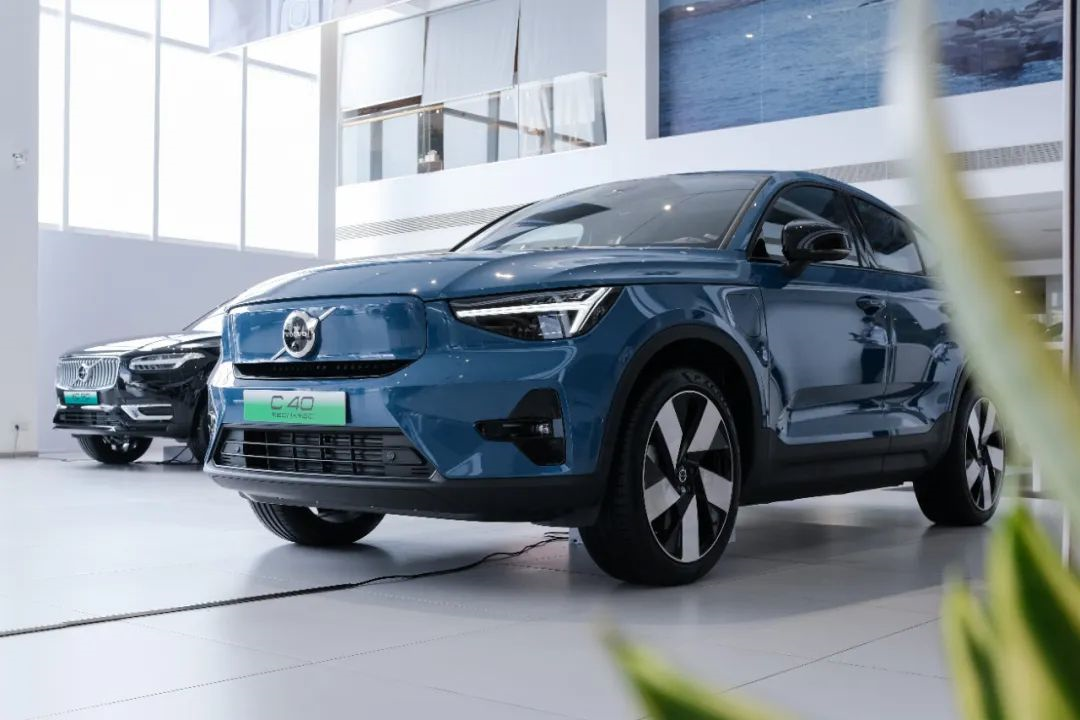
After 8 years, the once distinct C series of Volvo has produced a new model. But this time, it is not a performance double-door coupe but an all-electric SUV. This can be interpreted as an important milestone for Volvo’s comprehensive move towards electrification. And how do you think the market performance will be for C40, which is more individualized and values design more than the electric version of XC40? Feel free to leave your thoughts in the comments section.
This article is a translation by ChatGPT of a Chinese report from 42HOW. If you have any questions about it, please email bd@42how.com.
